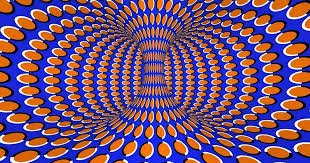Optical illusions are fascinating phenomena that trick our brains into perceiving reality in unusual and unexpected ways. These illusions reveal a great deal about how our brains process visual information and have fascinated scientists, artists, and the general public alike for centuries. In this article, we’ll explore different types of optical illusions, why they occur, and how they influence our understanding of perception, psychology, and even neurology.
Exploring the Fascinating World of Optical Illusions
What are Optical Illusions?
An optical illusion is any visual experience that appears to contradict physical reality. Optical illusions occur when our brains attempt to interpret visual data, leading us to see something different from the true object or image in front of us. They play on our perceptions by manipulating aspects like color, light, depth, size, and movement, challenging the brain’s usual interpretive methods.
Illusions generally fall into three categories:
- Literal Optical Illusions – where the image differs from the objects that create it.
- Physiological Optical Illusions – caused by excessive stimulation of the eyes and brain.
- Cognitive Optical Illusions – created by our brain’s tendency to organize sensory input into familiar patterns.
The Science Behind Optical Illusions
The brain interprets visual input by processing light as it reflects off surfaces and enters the eye. This light stimulates photoreceptor cells in the retina, where it is converted into electrical signals. These signals travel through the optic nerve to the brain, which then processes and interprets them.
The brain often relies on learned patterns and shortcuts (called heuristics) to understand these visual signals quickly and efficiently. These shortcuts are useful for navigating our complex world but are also what makes us susceptible to illusions. When these mental shortcuts clash with visual stimuli that are difficult to process, we experience an illusion.
Types of Optical Illusions
1. Literal Optical Illusions
Literal illusions present images that are different from the objects that make them. Artists use this type of illusion by manipulating shapes and lines to create images within images. For example, a classic example of this type is an artwork where you might see both a young woman and an old woman depending on how you focus your eyes on different parts of the image.
These illusions work because our brains shift between different interpretations. One classic literal illusion is the “duck-rabbit,” where a drawing can be perceived as either a duck or a rabbit depending on how one looks at it. This kind of illusion demonstrates how the brain can rapidly shift between interpretations when the visual cues are ambiguous.
2. Physiological Optical Illusions
Physiological illusions are created by excessive stimulation of the visual system, such as bright colors, moving patterns, or intense lights. Examples include the “afterimage effect,” where you see a lingering ghost image after looking at a bright or contrasting image for some time. For instance, if you stare at a red dot for a while and then look away at a white surface, you might see a green afterimage.
The famous “Hermann Grid Illusion” falls under this category. When you look at the white intersections on a grid of black squares, you may see grey dots at the intersections. This occurs because of how our retinal cells respond to light and dark patterns, creating a feedback loop that results in a visual effect that doesn’t actually exist in the image itself.
3. Cognitive Optical Illusions
Cognitive illusions arise from the brain’s assumptions about the world and how we interpret things based on prior knowledge. They are sometimes subdivided into different types, including ambiguous illusions, paradox illusions, and fictional illusions.
- Ambiguous illusions involve images that can be interpreted in multiple ways, like the Necker cube, which appears to flip its orientation as you look at it. This happens because the brain can’t commit to one interpretation of the 3D structure.
- Paradox illusions feature objects that seem impossible, such as M.C. Escher’s famous drawings of endless staircases. These illusions make sense at first glance but defy logic upon closer inspection.
- Fictional illusions are images where the brain creates a pattern or figure that doesn’t actually exist. A well-known example is the “Kanizsa Triangle,” where three Pac-Man-like shapes arranged in a triangular pattern make us perceive a triangle in the empty space.
Why Do Optical Illusions Happen?
Optical illusions reveal that what we see is a product of both visual input and the brain’s interpretation. Here are some common reasons behind these illusions:
- Contextual Influence: Context plays a big role in how we perceive an image. Surrounding shapes, colors, or lines can influence how we interpret an object. For instance, in the Ebbinghaus illusion, two identical circles appear different in size depending on the size of the circles surrounding them.
- Depth Perception: Our brains use various cues like shadows, size, and perspective to determine the depth of objects in an image. The Ames room illusion, where people appear to grow or shrink depending on where they stand in a distorted room, demonstrates how the brain is easily tricked into interpreting depth cues inaccurately.
- Contrast and Color Processing: Colors can change based on their background or neighboring colors. For example, in the “checker shadow illusion” by Edward Adelson, two squares of identical color look different due to shadow and contrast manipulations. This happens because the brain considers lighting and shadows to interpret an object’s color.
- Motion Perception: Illusions can also play on our perception of movement. In the “rotating snakes” illusion, still images seem to move due to the arrangement of colors and patterns, which our visual processing interprets as motion.
Optical Illusions and the Brain
Optical illusions provide valuable insights into the brain’s processes and limitations. Scientists studying illusions use brain-imaging techniques like fMRI to see how different parts of the brain respond to visual illusions. For instance, illusions that involve depth perception activate the parietal lobe, which processes spatial awareness. Cognitive illusions, however, often involve the frontal lobe, which plays a role in higher-level thinking and decision-making.
Optical illusions also demonstrate phenomena such as neuroplasticity—the brain’s ability to reorganize itself by forming new neural connections. Some illusions can retrain the brain to see things differently, showing the adaptability of human perception.
Applications of Optical Illusions
Optical illusions aren’t just for fun; they have real-world applications in art, design, and even safety. Here are a few examples:
- Art and Advertising: Artists have long used optical illusions to challenge viewers’ perceptions, creating engaging and thought-provoking works. Advertisers also use illusions to grab attention and make brands more memorable.
- Road Safety: Certain types of optical illusions are used on roads to reduce accidents. For instance, transverse lines on roads give drivers the impression that they’re driving faster than they actually are, encouraging them to slow down.
- Virtual Reality and Augmented Reality: Illusions are foundational to VR and AR technologies. By manipulating visual inputs, developers can create experiences that feel real to the user, immersing them in virtual environments.
- Neurology and Psychology: Studying optical illusions helps neurologists understand the processes involved in perception and visual cognition, including how people with conditions like schizophrenia or autism might perceive visual information differently.
The Future of Optical Illusions in Science and Art

As neuroscience and technology advance, the study of optical illusions will continue to shed light on the complexities of human perception. Machine learning and artificial intelligence also benefit from understanding how the human visual system interprets illusions. As we gain deeper insights into visual processing, applications of illusions in areas like artificial vision, human-computer interaction, and immersive environments will likely grow.
Conclusion
Optical illusions remind us that our perception of reality is not always accurate. By exploring illusions, we learn more about how our brains work and the remarkable, sometimes surprising ways in which we interpret the world around us. From simple images to complex motion illusions, the study of these phenomena offers endless insights into the intricacies of human cognition.







